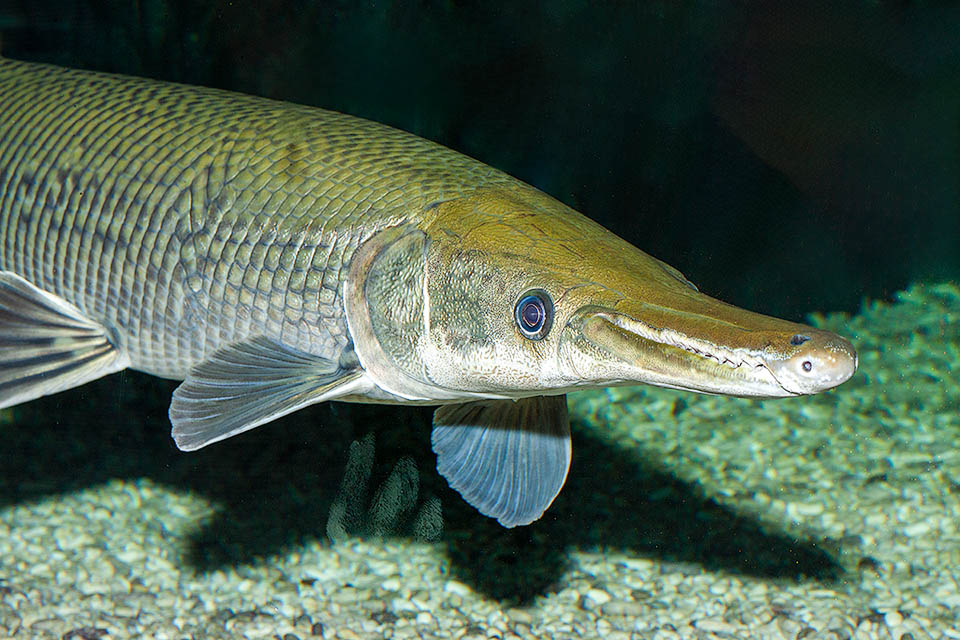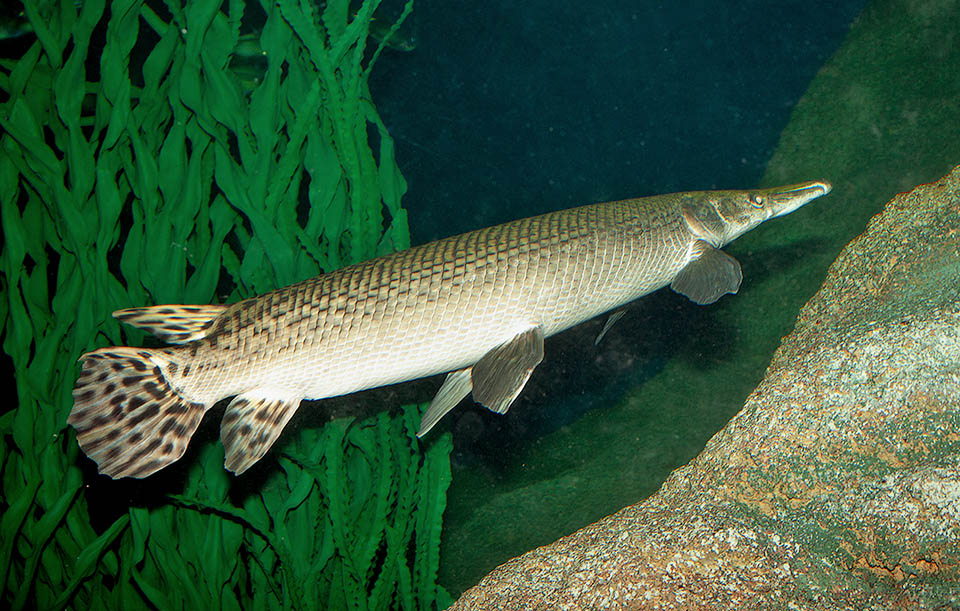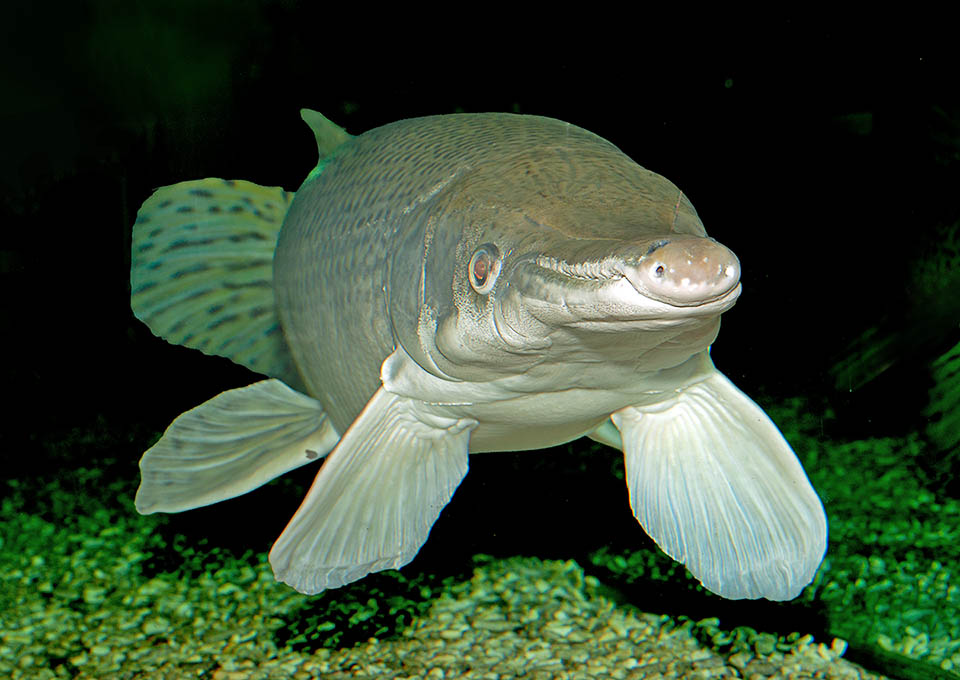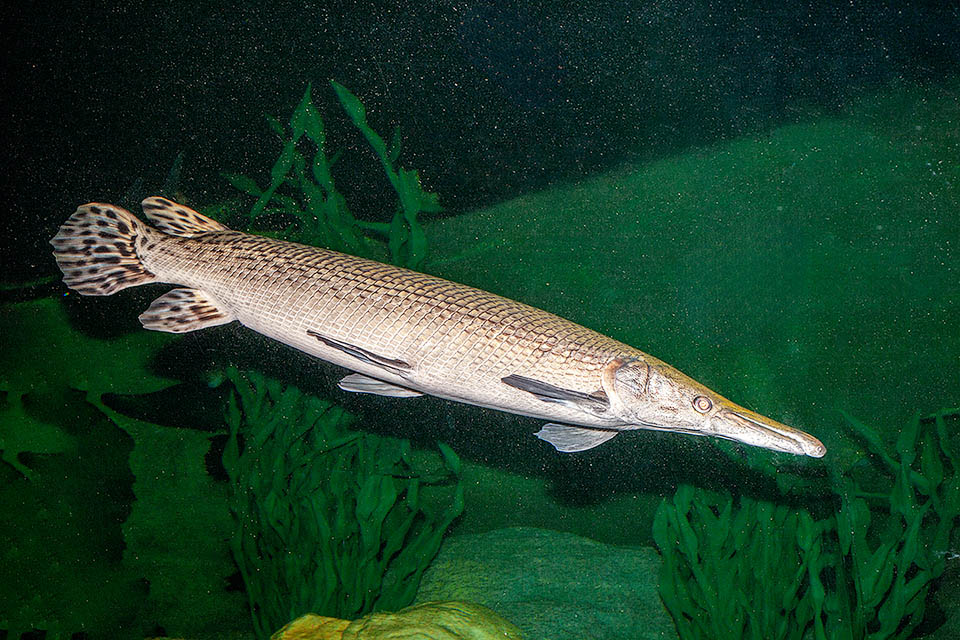Family : Lepisosteidae

Text © Giuseppe Mazza

English translation by Mario Beltramini

Unchanged since the Permian, Atractosteus spatula is a living fossil native to North America, introduced for sport fishing in South-East Asia © Giuseppe Mazza
Known as Alligator gar due to the shape of its snout with teeth similar to this reptile, Atractosteus spatula (Lacépède, 1803) belongs to the order of the Lepisosteiformes and to the family of the Lepisosteidae, the same of Lepisosteus osseus.
Both are living fossils that were already circulating in the Permian, about 300 million years ago.
The genus Atractosteus, created by Rafinesque in 1820, originates from the Greek “átraktos”, merged, and “ostéon”, bone, with reference to the cylindrical body covered by heavy bony ganoid scales.
The specific term spatula adds in Latin that the snout is broad, short and flat like an oar.

Known as Alligator gar, it reaches even 3 m of size, and stands among the 10 biggest extant freshwater fish © Giuseppe Mazza
Zoogeography
Atractosteus spatula is native to North America, from Mississippi to Mexico, but has been introduced for sport fishing also in South-East Asia where it has naturalized perfectly.
Habitat-Ecology
The adult Alligator gars mostly live in the stagnant waters of large rivers, lakes and swamps and rarely venture into brackish or marine waters hunting for fish, waterfowls, small mammals, crabs and turtles.

The spatula-shaped snout has on the upper jaw two rows of solid teeth, very similar to the alligators’ ones and often sold as such © Giuseppe Mazza
Morphophysiology
Atractosteus spatula stands among the ten largest freshwater fish existing nowadays. In fact, it may exceed 140 kg and 3 metres in length, about half of an alligator, with two rows of quite similar teeth on the upper jaw that then are sold as such.
The dorsal and the anal fin, located close to the caudal in a backward position, have blackish camouflage spots, whilst the showy pelvic and the pectoral ones are mostly uniformly dark. The livery, olive brown in colour, lightens towards the belly.
Ethology-Reproductive Biology

It reproduces in spring in the flood plains. Resilience is low but seen the vast range the species is nowadays not considered as under danger © Giuseppe Mazza
For reproduction the Alligator gars gather in spring in the flood plains where the eggs are laid.
The resilience of the species is very low, with a minimum time of 14 years for doubling the populations, and being very hunted, even with bow and arrows, the fishing vulnerability, high, marks 90 on a scale of 100. However, since 2025, evaluating its possible range in 200.000-2.500.000 square km, Atractosteus spatula appears as “LC, Least Concern”,in the IUCN Red List of the endangered species.
Synonyms
Lepisosteus spatula Lacepède, 1803; Litholepis adamantinus Rafinesque, 1818; Atractosteus adamantinus (Rafinesque, 1818); Lepisosteus ferox Rafinesque, 1820; Lepisosteus berlandieri Girard, 1858; Atractosteus lucius Duméril, 1870.
→ For general information about FISH please click here.
→ For general information about BONY FISH please click here
→ For general information about CARTILAGINOUS FISH please click here.
→ To appreciate the BIODIVERSITY of BONY FISH please click here.
→ To appreciate the BIODIVERSITY of CARTILAGINOUS FISH please click here.
